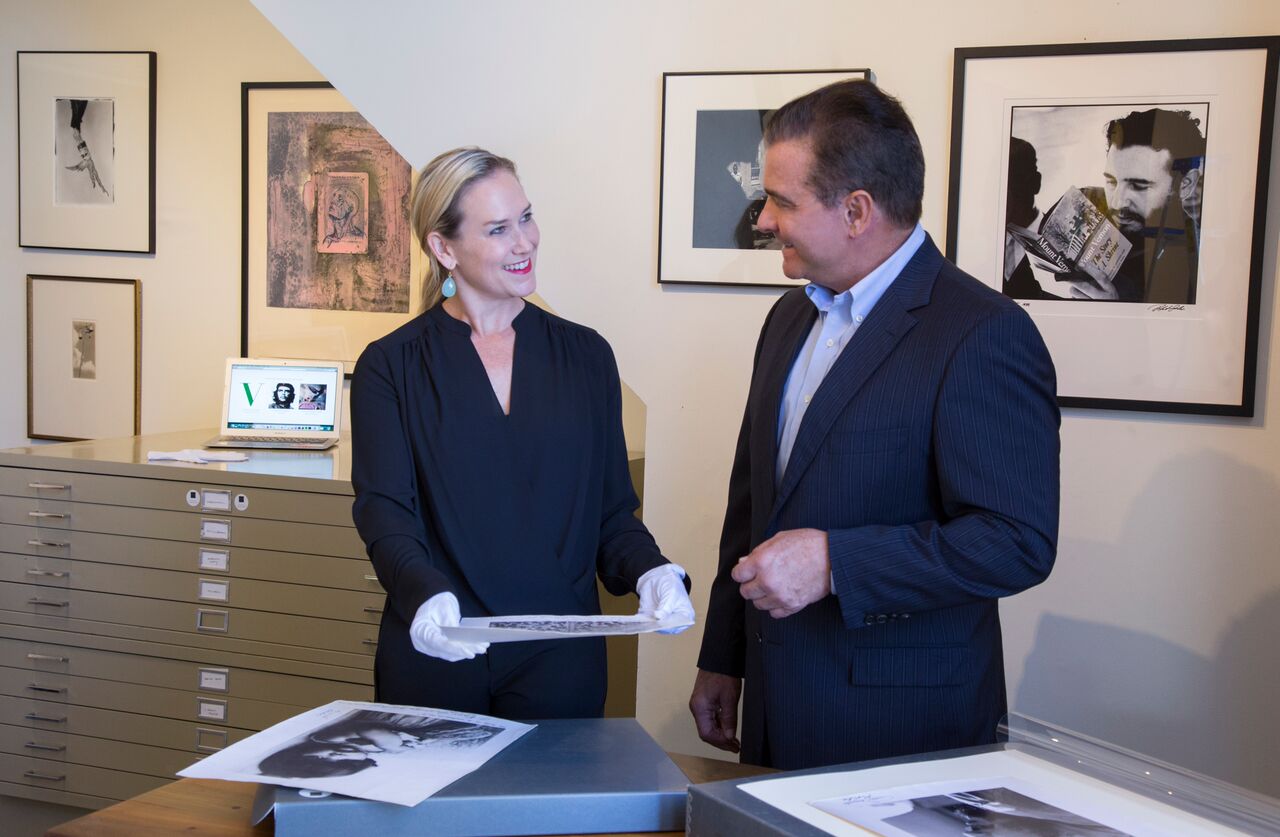What is your art worth?
SELL YOUR ART
Rebekah Jacob Gallery’s advisory arm connects art & buyers through online, innovative & strategic digital tactics:
Rebekah Jacob Gallery consults clients and conducts business to sell inventory with discretion, diligence, and confidence. We utilize private databases of buyers, a network of colleagues and galleries, traditional auction platforms, and internet auction platforms to broker art works internationally. We pride ourselves on our knowledgeable staff, experience, expertise, and an array of sales outlets.
Buying and Selling works of art
RJG offers a discreet and confidential gallery environment for private collectors and institutions to sell works of art through either consignment or direct acquisition.
Consulting
The gallery offers a comprehensive art advisory service available to collectors, museums, non-profit institutions, and corporations, as well as trusts, law firms, and banks. Our services include collection building and deaccessioning, estate planning and distribution, art collection development, and education of American art as well as of current market conditions. We also provide resources for and oversee restoration, framing, insurance, shipping, and installation.
Rebekah Jacob of the Rebekah Jacob Gallery, Charleston
Auction
RJG offers expert assistance in selling at auction. We can provide the research necessary to determine the value of a property in the context of the artist's body of work and its place in the current market. We also make recommendations for the most suitable locations, appropriate timing, and terms of sale of the art work.
Appraisals
Rebekah Jacob Gallery prepares fine art appraisals for fair market and insurance purposes, both for private collectors, museums, and other institutions. Appraisal reports are thoroughly researched and put together in accordance with the Uniform Standards of the Professional Appraisers Practice.
“I broker and appraise fine art and photography that I believe in- sourcing blue chip artists and inventory with proliferation in the Fine Art market,” says Jacob. “I value the longevity of my relationships with clients, and prioritize these relationships over one or many transactions. Concurrently, I am constantly sourcing inventory and expanding our presence in the global art market at large through travel, research and an overall ‘full-emersion’ in the art world.” ”
ART APPRAISAL
An art appraisal is a written statement, independently and impartially prepared by an expert, setting forth an opinion of defined value of an adequately described property, as of a specific date, supported by the presentation and analysis of relevant market information. Art works are appraised to USPAP standards and evaluated based on current market comparisons and the appropriate market place. We offer an array of appraisal services for private individuals, institutions, and corporations. Appraisals are devised for purposes--such as resale, insurance, estate, bankruptcy, and equitable distribution.
Appraisal content includes the following:
Description of appraised object: artist, title, medium, date(s)/period of creation, signature, insciprtion, dimensions, etc.
Condition
Determinations of appropriate markets and market data comparisons
Major and minor auction histories pertaining to an individual lot (if applicable)
Provenance (history of the art work)
Fair market value, replacement or marketable cash value
Additional information: exhibition history, publication history, artist history, etc.
INSURANCE SCHEDULING
DAMAGE AND LOSS
SALE AND PURCHASE
EQUITABLE DISTRIBUTION
CHARITABLE DONATIONS
BANKRUPTCY
ESTATE AND TAX RETURNS
PROBATE OF ESTATES
Insurance Appraisals
A thorough and calculated insurance value protects the owner from loss of his/her art work. This value represents the best retail price that the insured would pay to replace an art work. Experts advise art collectors to schedule on a homeowner’s policy any art work with a value of $5000 or higher. To determine a value, appraisers consider rarity, finesse, historical importance, provenance and quality. Appraisers consider local, regional, national and International markets in determining insurance values. As a general rule, it is important to review an insurance appraisal every three years, re-evaluating the current markets relent to his/her art work — or collection at large.
Estate Appraisals
When transferring a taxable estate by a US Citizen or resident, A Federal Estate Tax is imposed. If the gross assets exceed a minimum amount, he/she must file a listing of assets —and their values —with the Internal Revenue Service (IRS). An estate appraisal lists tangible assets, including art, and must bee effected accordingt to a strict set of IRS standards and rules. The appraisal, based on Fair Market Value (FMV) is filed as part of the estate tax documents.
A mis-represented appraisal can be costly. On an annual basis, an IRS panel in Washington reviews tax filings of certain art, antiques, coins, and related categories. Some of the most common grounds for IRS rejection of estate appraisals are the following: insufficient catalogue content ; incomplete price level comparison ; improper format ; absence of required documents ; i.e.
Damage and Loss Appraisals
After-the-fact damage appraisals commonly include a repair, restoration, or conservation report and two values; the value of the piece prior to the damage, and the value of the piece after its proposed restoration. In most cases, the restored value will be lower than the pre-damage value. In some cases it is the same, in others, not commonly, it can be higher.
Each year we confront cases where the restoration process has done more harm to the piece than the accidental damage. It is important that the appraiser in damage and loss cases have solid experience in various restoration processes, especially in the areas of furniture, paintings, and porcelain. In these and in many other areas, it is essential that the correct restoration processes be employed.
There are two rules of thumb in the restoration process; first, do no harm; second, do nothing that cannot be reversed. Owners of furniture and paintings should be especially aware of the fragile nature of the surface patinas of these works, and the dramatic loss of value that may occur when these old surfaces are altered.
Gift Appraisals
Charitable donations with values of $5,000 or more must be documented by a qualified appraiser. The appraisal must be attached (as part of IRS Form 8283) to the tax return. (If Form 8283 is not attached to the return the deduction will not be allowed unless the taxpayer’s failure was due to reasonable cause, or a good faith omission, and not willful neglect. In the former cases, the IRS will usually grant the taxpayer 90 days to comply.). “Gifts” by the IRS are considering as property or the use of income from property, without expecting to receive something of at least equal value in return. One may also make a gift if you sell something at less than its full value. The gift tax applies in both of these cases. Gift and Charitable Giving appraisals are, like estate appraisals, determined at Fair Market Value.
Equitable Distribution Appraisals
When couples or family members divide estates, an equitable distribution of personal property is documented in an appraisal. The appraisals os different than an estate planning appraisal because the art expert determines the marketable cash value of the items, meaning the fair market value of the property minus the costs of selling them, rather than the fair market value alone.
These appraisals can be more theoretical than practical.
Damage and Loss Appraisals
Appraisals for damaged and lost art work includes a repair, restoration, or conservation report. The appraiser typically applies two values: one value to the piece prior to the damage and the second value of the piece after its proposed restoration. In many cases, the restored value will be lower than the pre-damage value. However, in some cases the value is the same.
Often, an art expert works with fine art and photography accidentally damaged by fire, theft, water, i.e. It is important that the appraiser in damage and loss cases have solid experience in various restoration processes and also guide the client to the best conservationist for that particular art work. Two important factors of conservation are (1) do not harm the art work and (2) execute nothing that cannot be reversed.





